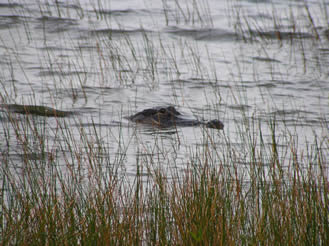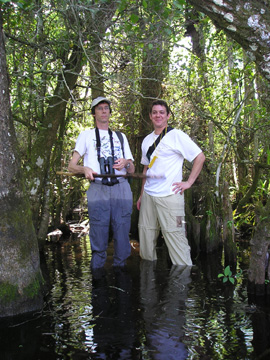Personal
Growing Things | Playing Games | Building Things | Outdoors | Present Day | From The Past |
Outdoors
Backpacking
A few years ago, I started backpacking again. I did a lot of backpacking in the New Mexico mountains during my college years. Fast forward to a new century (2009) and it was time to return to a favorite hobby. I had always wanted to take up solo backpacking - hiking and camping alone in primitive areas of state parks, national parks, and wilderness areas. To make this possible, I upgraded a lot of my older and much heavier equipment to newer, lighter stuff. (This was also a means of preserving my 40-something year-old knees). Although I do not take it to the ultra-lightweight extremes of some lightweight backpackers, I worked pretty hard to get my base pack (not including food and water) down to 17 pounds. This means that for trips where water is available I can travel with a total pack weight of 20 pounds and still be able to stay out for 5-6 nights. When I have to carry water, this means that a pack weight of 30 pounds gives me two or three nights out depending on the weather. Through lots of research, advice, and testing, the core equipment I currently use is:
- Tent: REI Quarter Dome T1 - I am convinced that this is the best solo tent available
- Sleeping Bag: Mountain Hardwear Lamina +45 (synthetic fill) or REI sub-Kilo +20 (down) depending on weather
- Pad: Thermarest Prolite (however, I'm currently rethinking whether an inflatable pad is really the best choice)
- Backpack: REI Flash 50 (28 ounces) you really have to make some tradeoffs in a pack to get this weight, but this I think is the best pack in its weight range.
- Water purification: First Need by General Ecology - you could filter sewage with this thing and still get potable water.
Hermits Peak (Summer 2010) It just gets too hot for backpacking during the Texas Summer. My main summer backpacking trip this year was to Hermit's Peak in the Santa Fe National Forest / Pecos Wilderness of northern New Mexico. Starting at the trailhead, the hike to the peak is 4.6 miles from a starting elevation of 7350 to a final elevation of 10,160. It rained every inch of the way, but the view from the top is spectacular and watching the sunrise from the peak made the previous day's struggles worthwhile. The following nights were spent down the western slope of the peak in El Porvenir canyon.

The view from the top of Hermit's Peak, facing East toward the great plains. During a thunderstorm. |

The view of the peak from the base of the trail. |
| January 2011 - More content coming soon . . . . |
|
| |
|
| |
|
Exploring
The Florida Everglades and Big Cypress preserve were favorite hiking grounds during my time in Florida. Well, hiking isn't exactly correct. The term is "slogging" because you get from Point A to Point B by wading past alligators and snakes in water that ranges from knee-high to waist-high, and waders aren't an option. Here I am with Philip Stoddard who was leading us on a trip through Big Cypress preserve.

|
 |
| January 2011 - More content coming soon . . . . . |
|
| |
|
| |
|
| |
|
| |
|
|


